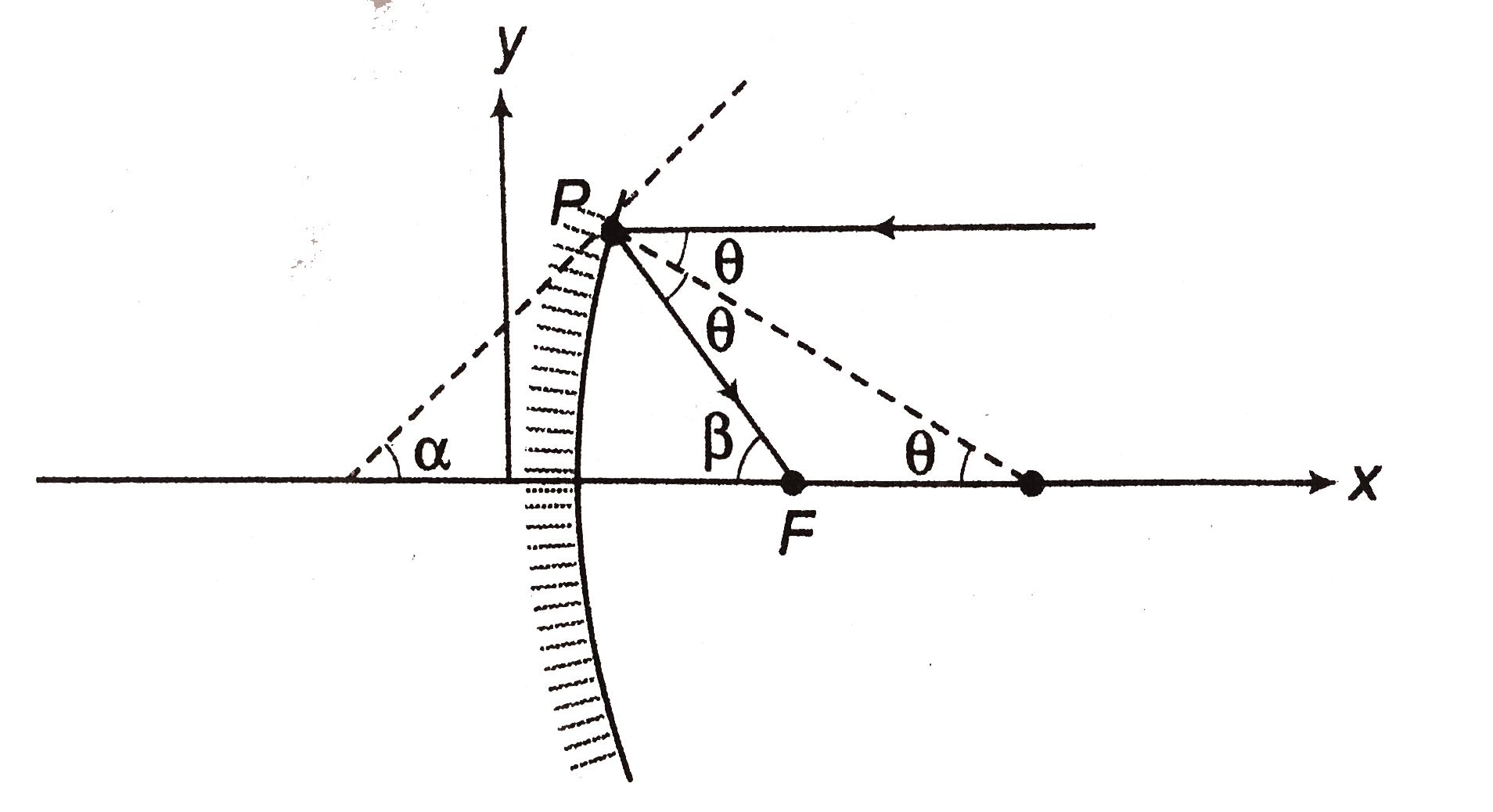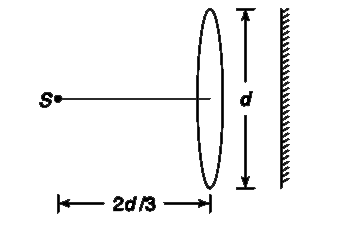Show that a parallel bundle of light rays parallel to the x-axis and incident on a parabolis reflecting surface given by x=2by2, will pass through a single point called focus of the reflecting surface. Also, find the focal length.

The correct Answer is:A, B
Let the ray is incident at a point P=(x1,y1) on the mirror. Then, slope at P,

tan(α)=(dydt)(x1),y1=14b(y1) ...(i)
(α)=90∘−(θ)
and(β)=2(θ)
Now, the reflected ray is passing through P(x1,y1) and has a slope tan(β).Hence, the equation will be
(y−y1)(x−x1)=−(tanβ)
=(−tan2θ)=−2tanθ1−tan2θ
∴(y−y1)=2cot(α)1+cot2(α)(x1−(x)) ...(ii)
Further, (x1)=4(by1)2 ...(III)
At F,x=0 ...(iv)
From eq,(i) to eq.(iv),
we get x=18b
It shows that the coordintes of F are unique (18b,0).
Hence, the reflected ray passing through one focus and the focal length is18b Hence proved.
Topper's Solved these Questions
Similar Questions
In the case of a convex lens, show the path of the refraction ray when the incident ray of light (1) is parallel to the principal axis of the lens (2) passes through the focus of the lens (3) passes through the optical centre of the lens.
View SolutionA point source (S) of light having power 500 W is kept at the focus of a lens of aperture diameter d. The focal length of the lens is 2d3 . Assume that 40% of the incident light energy is transmitted through the lens and the complete transmitted light is incident normally on a perfectly reflecting surface placed behind the lens. Calculate the force on the reflecting surface.
 View Solution
View Solution
Knowledge Check
- Question 1 - Select One
The angle made by incident ray of light with the reflecting surface is called
Aglancing angleBangle of incidenceCangle of deviationDangle of refraction - Question 2 - Select One
The angle made by incident ray of light with the reflecting surface is called
Aglancing angleBangle of incidenceCangle of deviationDangle of refraction - Question 3 - Select One
A ray of light moving parallel to the X-axis gets reflected from a parabolic mirror whose equation is (y−2)2=4(x+1) . After reflection , the ray must pass through the point
A(-2,0)B(-1,2)C(0,2)D(2,0)
A ray parallel to the principal axis after reflection from a concave mirror will pass through
View SolutionA ray of light moving parallel to the x-axis gets reflected from parabolic mirror whose equation is (y−3)2=8(x+2). After reflection, the ray must pass through
View SolutionA light ray is incident on a smooth reflecting surface making an angle of incidence 2i. If the angle of incidence is doubled, then the deviation of the light ray is equal to ______ .
View SolutionA light ray is incident on a smooth reflecting surface making an angle of incidence 2i. If the angle of incidence is doubled, then the deviation of the light ray is equal to ______ .
View SolutionA ray of light is sent through the point P(1,2,3) and is reflected on the XY plane. If the reflected ray passes through the point Q(3,2,5) then the equation of the reflected ray is
View Solution
